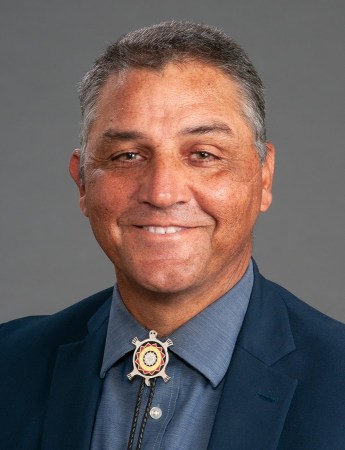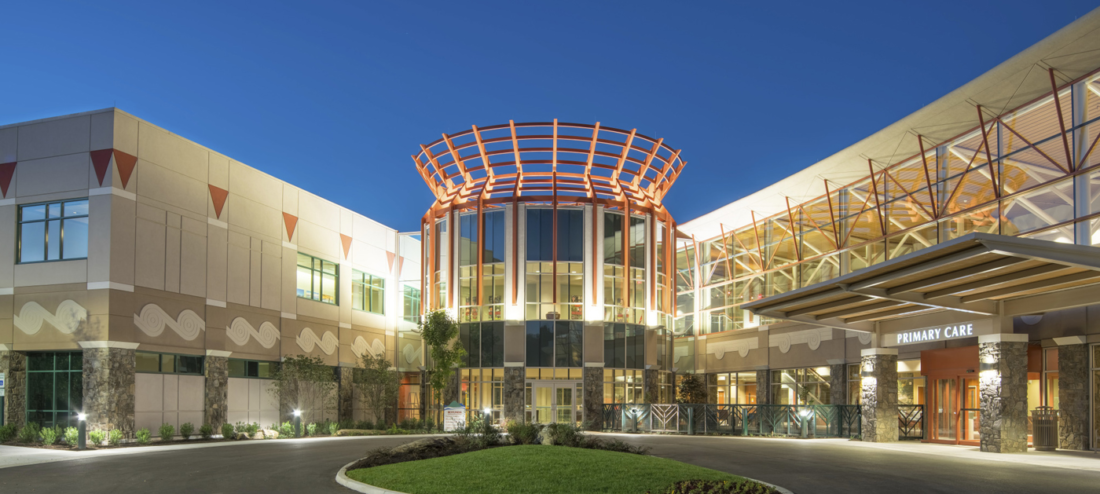By Melba Newsome, North Carolina Health News
In September 2018, the Eastern Band of Cherokee Indians made it onto a list they probably would have preferred to avoid. The Office of National Drug Control Policy identified the Qualla Boundary, the Eastern Band’s 56,000-acre homeland just south of Smoky Mountains National Park, as one of 10 “high intensity drug trafficking areas” in the country.
Following a two-year undercover investigation targeting drug traffickers, federal, state and local law enforcement authorities raided the Boundary, arrested 132 people and seized an array of illegal drugs valued at $1.8 million, including heroin, fentanyl, methamphetamine, oxycodone and marijuana. The operation was touted as a huge success and a possible turning point in the scourge that had plagued the community.
“The arrest of these drug dealers is a critical step towards ensuring that the Eastern Band of Cherokee Indians is able to provide the healthy environment our people deserve,” Principal Chief Richard Sneed said in a DOJ press release in 2018.
Instead of improving, the community’s drug problems only got worse. Drug-related crimes and addiction rates continued apace and, like everywhere else in the state, grew worse during the pandemic. Statewide, deaths from drug overdoses increased more than 25 percent in the first six months of the pandemic, according to CDC data. Almost immediately, the lockdown on the Boundary led to a dramatic increase in fatal and non-fatal drug overdoses.
In a May 3, 2020 Facebook video, Sneed issued a warning to the drug dealers: “We’re coming for you,” he said. “It’s a never-ending battle. Every time we take a dealer down, every time there’s interdiction, every time there’s a seizure, that supply chain seems to just continue to keep rolling. [Y]ou’re killing our people, and I’m done. I’ve had it.”
Meanwhile, state officials and experts have continued to say that a criminal justice approach to the opioid crisis won’t solve it. Gov. Roy Cooper has repeatedly said that “we cannot arrest our way out of this problem.”
There is a growing acknowledgement among treatment and drug policy experts that real solutions must center around prevention and treatment which include mental health counseling, medication-assisted treatment, as well as the time and support needed to recover.
Almost in recognition of that reality, Sneed later added a comment to the video. “I ask for prayers for our tribal citizens who are struggling with addiction as well as their families. Please encourage [those suffering] to seek treatment, remind them that there is help, and there are people that care about them.”
Racial disparities persist
More than a decade ago, an analysis from Seattle’s Urban Indian Health Institute revealed that substance use rates are higher among American Indians compared to other racial and ethnic groups. A recent analysis in the N.C. Medical Journal found a similar disparity in overdose rates in the state, as well.

North Carolina has the largest American Indian population east of the Mississippi River; they represent just 1.2% of the overall population, according to the latest available data. However, in 2020, the drug overdose death rate was 2.3 times higher for American Indians than white people in North Carolina (75.4 and 32.7 per 100,000, respectively), according to the state’s Opioid and Substance Use Action Plan Data Dashboard.
“We really don’t understand why that is very well,” said Ronny Bell, a health equity researcher at Wake Forest School of Medicine. “In general, populations in rural communities are more likely to be impacted by this issue because you have more people in jobs that can result in injuries that can lead to pain. The eight tribal homelands are all in rural communities where there is an increased likelihood of being injured in the occupational settings and a lack of access to quality pain treatment.”
A history of trauma, violence, poverty, high unemployment, lack of health insurance and racism also contribute to an increased risk of addiction.
The disproportionate impact of the opioid crisis

Western North Carolina has been hit particularly hard by opioids. Data from the state’s Opioid Addiction Dashboard found the five western North Carolina counties that include the Qualla Boundary had an average of 43.6 unintentional overdose deaths per 100,000 in 2020, compared to 29.7 statewide.
On the other side of the state, the overdose death rate was even higher in 2020 for Robeson County, at 64.3 per 100,000. About 45 percent of the Lumbee Tribe’s 55,000 members reside here. Significant numbers also live in Hoke, Cumberland and Scotland counties.
Erika Locklear oversees the Lumbee Tribe’s Medication-Assisted Treatment support program and has witnessed a disturbing trend in the Lumbee community.
“The problem is getting much worse,” Locklear said. “COVID has been the biggest factor. When COVID first started, I don’t know if it was a fear factor or what, but things were getting a bit better. Then, after the first couple of months, the overdose rates just skyrocketed.”
Providing solutions
A huge billboard stands at the Boundary’s main entrance in Cherokee in Jackson County.
“Opiate Dependent Addiction Treatment. Confidential. Life Changing. Help.”
Two decades ago, tribal leaders recognized the need for robust substance use and mental health treatment services for its tribal members. As the only federally recognized tribe in the state, the Eastern Band of Cherokee Indians receives significant financial support from the federal government, including free healthcare for its members through the Indian Health Service.
However, per capita spending on the health of Native Americans is significantly less than for the general population. According to data from the Indian Health Service, the national average for fiscal year 2019 was $4,078 for AIs, compared to $9,726 overall for calendar year 2017.
That imbalance carries over to treatment for opioid use disorder, as well. As more people of color struggle with and die from opioid use disorder, the funding is still targeted at white people almost exclusively. A $54 million federal grant allowed North Carolina to provide treatment to 12,000 people. Despite being the population with the highest overdose rate, fewer than 1 percent of those who received care were American Indian.
Meanwhile, the Eastern Band of Cherokee Indians oversees and operates its own public health care system and provides some of the most extensive substance use and mental health care of any tribe in the nation without copays or deductibles.
Significant investments in its health and treatment services include an $80 million hospital and a $16 million, 20-bed adult residential treatment facility. The old hospital building is now a crisis stabilization unit for patients with mental health issues or who require detox services. In addition, there are certified addiction counselors, psychiatric social workers, clinical psychologists and a variety of related community-based support groups.
Doing more with less
The Eastern Band’s initiative is viewed as a model for the treatment of substance use disorder but it is not easy to duplicate, particularly for lower-wealth tribes like the Lumbee. The Lumbee is the largest tribe in North Carolina and east of the Mississippi River, but they still lack federal recognition and the health care funding that goes with that. And, unlike the Eastern Band, they don’t operate a casino that might provide them with revenue.
“The Lumbee tribe does have quite a few tribal members who are practicing physicians, physician assistants, and nurse practitioners,” Bell noted. “That is a benefit to many of the people from the community.”
Lumbee’s MAT program is funded by a three-year $1.5 million grant from the state Department of Health and Human Services. It provides services for 65 Lumbee tribe members each year. Locklear doesn’t have an exact number but estimates that they have served hundreds and referred many more to their partnering agency, Lumberton Treatment Center.
Eighty percent of the MAT patient population is male, although there is no gender divide in substance use in the American Indian population.
“Based on data from the Injury and Violence Prevention Branch [of NCDHHS], the proportion of females who die from overdoses seems to be higher in the American Indian population,” said Bell.
In addition to providing buprenorphine on-site, methadone is available at the Lumberton Treatment Center. The free services include support group sessions and individual and group counseling sessions.
In their N.C. Medical Journal article, Community-driven Approaches to Preventing Overdoses Among American Indians, Bell and the co-authors recommend providing culturally appropriate, community-driven treatment and social support services. The tribal-run MAT program uses a talking circle approach in their counseling sessions and holds smudging ceremonies, a traditional spiritual cleansing ritual process Locklear describes as like going to church on Sunday. There is also a lot of education about the cultural traditions and history of the Lumbee people.
“A lot of people have kind of moved away from that so I think it helps and it’s great that they developed this program,” Bell said.
As addiction rates and overdose deaths increase, the MAT program becomes more vital but the funding runs out at the end of the month.
Locklear says the tribal administration is looking for resources to keep it going as long as needed, which seems to be for the foreseeable future.
This story is part of a reporting fellowship on health care performance sponsored by the Association of Health Care Journalists and supported by The Commonwealth Fund.
This article first appeared on North Carolina Health News and is republished here under a Creative Commons license. North Carolina Health News is an independent, non-partisan, not-for-profit, statewide news organization dedicated to covering all things health care in North Carolina. Visit NCHN at NorthCarolinaHealthNews.org.![]()



Before you comment
The comments section is here to provide a platform for civil dialogue on the issues we face together as a local community. Xpress is committed to offering this platform for all voices, but when the tone of the discussion gets nasty or strays off topic, we believe many people choose not to participate. Xpress editors are determined to moderate comments to ensure a constructive interchange is maintained. All comments judged not to be in keeping with the spirit of civil discourse will be removed and repeat violators will be banned. See here for our terms of service. Thank you for being part of this effort to promote respectful discussion.